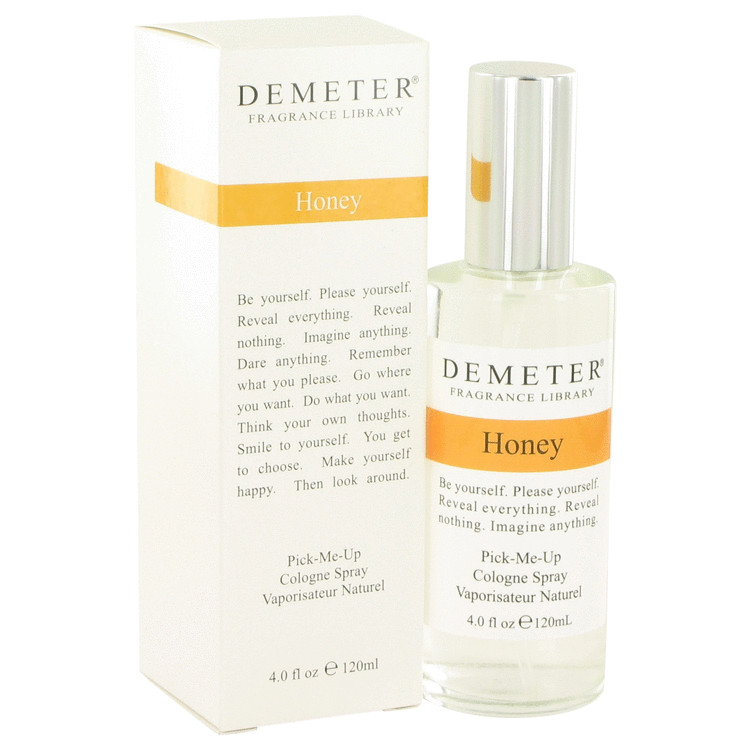Honey is a sweet substance that honey bees make from the nectar of certain flowers. A single beehive can produce up to 200 kilos of honey each season.
Honey notes belong to the gourmand classification of perfumes. Honey notes are always sweet but accompanied by a variety of flavors.
The difference in accompanying notes is because honey comes in so many different varieties. The variety is because bees make honey and the bees feed from a variety of flowers. So, the honey’s smell and color depends on the flowers the bees that produced that honey fed from.
For instance, orange blossom honey smells like sweet florals while buckwheat flower honey smells more animalic. Honey from lavender fields has a camphorous scent and honey from tobacco flowers has a smoky undertone.
Another reason why honey smells different in different fragrance formulas is that honey notes are mostly used as lingering base notes in gourmands but rarely as a sole or major theme.
Honey notes are limitless in terms of other notes that accompany the honey. The notes could be woody, flowery, herbal, or even tobacco-y.
How Honey Is Incorporated Into Perfumes
Honey is not an essential oil, so it must be processed before putting it into a perfume. Honey may be introduced into a fragrance in several ways, they are:
1.. Honey Absolute: The purest form of “honey” used in perfume formulation is sometimes called “honey absolute.”
2. Other times, beeswax is used to create the impression of honey notes. This wax is produced by bees. They use it to make the hives in which they store their honey.
After extracting all the honey, the wax will be treated with volatile solvents, and the resulting product is then washed with alcohol to finally deliver an absolute. Beeswax absolute smells stronger than honey and it is muskier and animalic.
3. Also, some flowers give off notes that are quite similar to honey. Some of those flowers are honeysuckle, mimosa broom, immortelle, privet, pittosporum, and cassia. Sometimes, blond tobacco or hay absolute can also be used to produce natural honeyed notes.
RELATED: Everything You Need To Know About Vegan Perfumes
4. However, in modern times, we now work with synthetic notes which are relatively cheaper and sometimes more environmentally conserving. Synthetic molecules like phenylacetic acid give the impression of honey notes in a perfume.
Hence, you could get a “vegan” or cruelty-free perfume with honey notes.
How Honey Notes Are Combined with Other Notes
Honey notes usually smell rich, warm, sweet, and snuggly. They are perfect for cooler weather and it’s easy to see why honey is easily incorporated into gourmand and oriental fragrances. Despite this, it is more common to find a honey note as an accord in fragrances rather than as the central theme.
Honey enhances floral and citrus notes but it tempers animalic notes. The warm animalic facets of honey make it pair beautifully with woody notes.
Check out our top five recommended honey perfumes:

- Floris Honey Oud is an intricate mix of honey, bergamot, patchouli, rose and agarwood.

2. The summer perfume introduced in 2013 features enticing notes of rose, freesia, orchid and honeysuckle, which combine perfectly with green accents to send a lovely, light message.

3. This perfume stuns by featuring honey as the sole note. The warm perfume has enough sillage to cover you for the whole day. Use sparingly.

4. Launched in 1985, Poison is classified as an oriental fragrance. The perfume is a luxurious blend of amber, honey, berries, and other spices.

5. Angel was released in 1992. The perfume explores notes of honey, chocolate and caramel. Angel also features vanilla, sandalwood, and patchouli notes. Other notes in Angel are: fresh citrus, melons, peaches, and plums.
Angel is classified as a woody oriental perfume.
Thierry Mugler Angel

